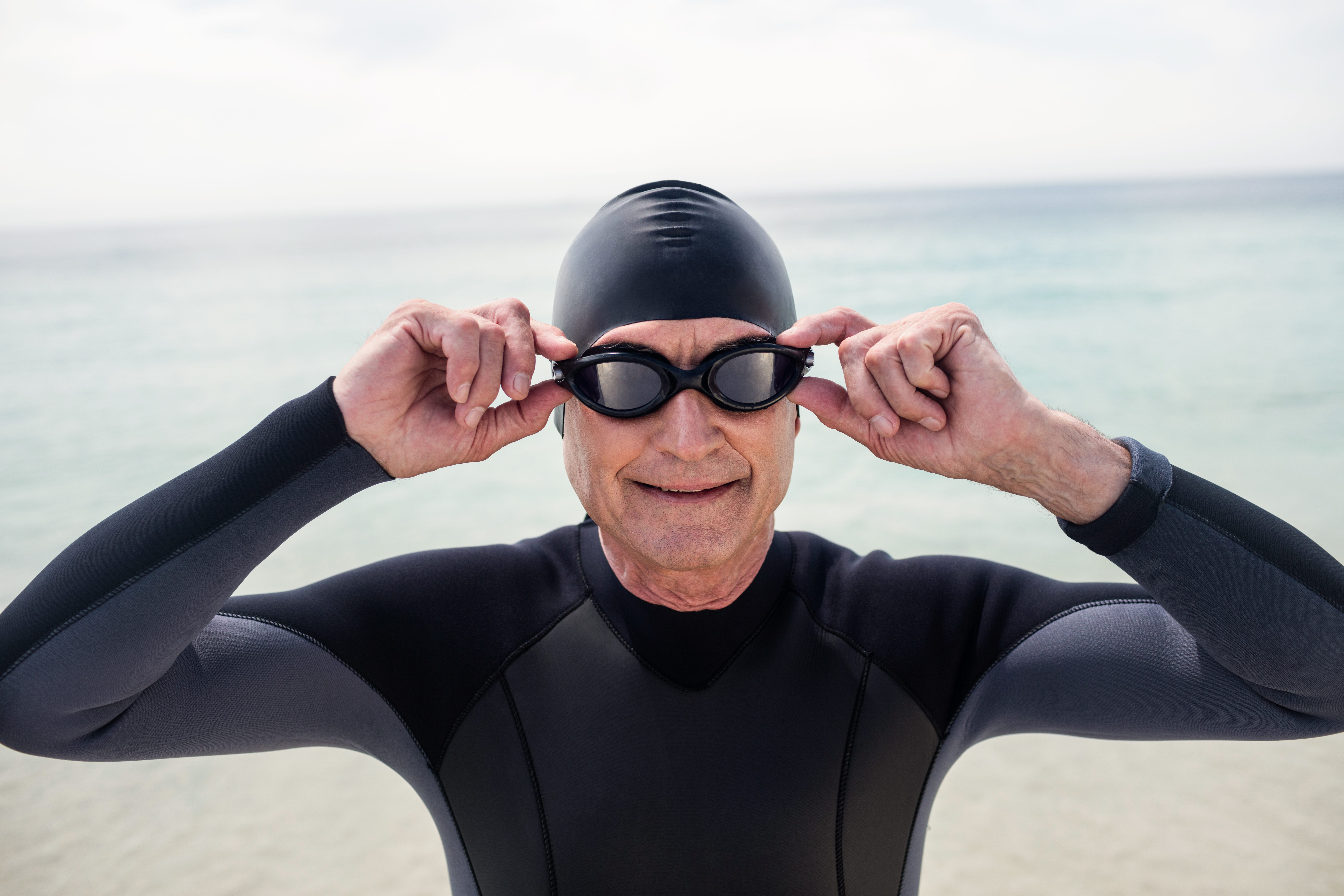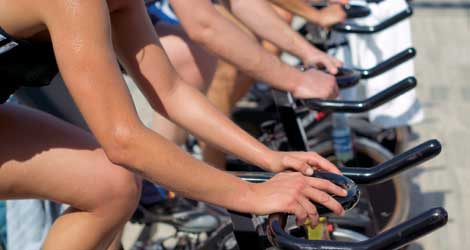Five beginner tips for your first triathlon
Getting to your first race isn't easy. Here are five tips to help you get to the starting line.

While the prospect of doing your first triathlon may seem incredibly simple from the outside, that’s not necessarily everyone’s reality. Just sign up, show up and dive in, right? Wrong.
Once you start looking into what you’ll need for your first event, things can get a little overwhelming. On top of the physical preparation you need, there’s also the costs, pieces of equipment and the intimidation of simply showing up. (“Can I really walk in there with my mountain bike?” you might be asking.)
It doesn’t need to be this hard. Check out these five tips to get yourself to the start line of your first race.
1. Find a training (or even racing) group
Joining a training group has endless benefits. First off, it will simply make your workouts more enjoyable — doubling as a social activity. You will find a bit of extra motivation to get out and train when people are relying on you to be there, and you can also pick up a few things from some experienced triathletes.
However, working with a group doesn’t have to be limited to training.
As previously mentioned, it can be intimidating to show up to a race – especially your first. This issue, along with several other barriers to entry the sport, is why Olympic gold medalist Simon Whitfield started up the TriathlonTogether program.
TriathlonTogether is Whitfield’s way of making the sport more accessible. You participate as a “duo” or “squad” and, if you arrive on your own, you’re assigned to a team.
“We like to say triathlon is accessible, but it’s not,” Whitfield says. “It’s a very expensive sport. It’s got a lot of barriers to entry. It’s a big-time commitment. It’s a logistics nightmare for race directors and participants – you have to bring a bike down to an event and its intimidating.”
The first TriathlonTogether event took place indoors at Calgary’s Repsol Center in February, and then events were held at both the Edmonton WTS and Toronto Tri Festival in 2019. It will be back in 2020.
So whether it’s finding a group to go out on rides and runs with, or doing one of the TriathlonTogether events as a way of getting your foot in the door, doing the sport with others is an easy and enjoyable way of getting started in the sport.
2. Don’t overthink it: Training
One thing that may be holding you back of diving into your first triathlon is the training. Sure, completing a race seems both fulfilling and enjoyable, but if you haven’t prepared adequately, it could end up being miserable.
Although that can be true a lot of the time, don’t buy into the idea that you need to dedicate your life to swimming, biking and running in order to do a race.
Simply looking to complete a standard-distance (sprint) event? Just get yourself out for one swim, ride and run a week, and then go from there. If you set your training bar too high off the start and then fail to maintain it, you’ll find yourself deterred. Start slow, be consistent and gradually dial things up at your own pace.
3. Don’t overdo it: Equipment
If you start to go down the rabbit hole of looking for the latest tri gear on the market, things can get expensive very quickly. To do your first race, you only need the basics.
In the swim, goggles and a suit will do. The race will provide you with a cap. Don’t worry about finding a tri suit that you can wear for the whole race, just throw on a shirt (and shorts if you want) once you’re out of the water. If you start racing consistently, then consider investing in a wetsuit.
Don’t go out buying an expensive bike before your first race. Use the one you have, borrow one or buy used. You’ll also need a helmet, and adding a water bottle holder to the bike frame will also be beneficial if you’re aiming for anything longer than a tri-a-tri.
And then shoes, of course. Just make sure they fit, and that you’ve used them before. While they may be unavoidable sometimes, the right shoe will limit the severity of your post-race blisters.
4. Make a commitment
You can spend a lot of time in your head thinking “I’ll start training when ‘X’ happens,” or “I’ll do that race once ‘X’ isn’t so busy”, but ‘X’ hardly ever cooperates. If you just go ahead and sign up, you’re making a commitment to yourself.
Once this is done, all of a sudden you’ll find time to train and prepare for the race. It’s that little spike of motivation that you need to get out the door.
If you’re planning on doing a race, but registration has yet to open, tell people about your plan. Friends, family, co-workers, post it on social media, whatever. By doing this you become accountable to follow through.
5. Try an indoor race
If you want to get into the sport, but the prospect of an open water swim or a bike out on the road seems intimidating, another way to get started is by doing an indoor triathlon.
Similar to Whitfield’s TriathlonTogether program, the idea of racing indoors eliminates a lot of the barriers the sport has. Afraid of swimming in open water? Great, this one’s in a pool (you can stop as much as you want). Not confident in your biking ability, or don’t have a bike? No problem, the cycling portion takes place on a spin bike. And, as you might have guessed, the run is on a treadmill or indoor track.
Another positive about indoor triathlons? Everyone competes for the same amount of time. So, for example, at the Triathlon Ontario Provincial Championship races (there are six per year from January to May), each athlete does each discipline for 15 minutes, and they score points for their mileage. Though it’s nothing to be embarrassed about, finishing last in any given race is something that will always hold people back from competing. This eliminates that.
This is a format that Christina Collins has also used to help promote women’s inclusion in the sport.
Collins founded Living Fierce Events, which offered the first women’s indoor triathlon in February at the University of Alberta.
“I knew how intimidating triathlon can be, so I wanted to create fun events for women looking forward to trying something new that would make the sport of triathlon more accessible,” says Collins. “To break down the barriers of entry, while, at the same time, empowering women to try something new.”
The Living Fierce series will continue in 2020 with scheduled dates in March and May. You can check out their website here.



